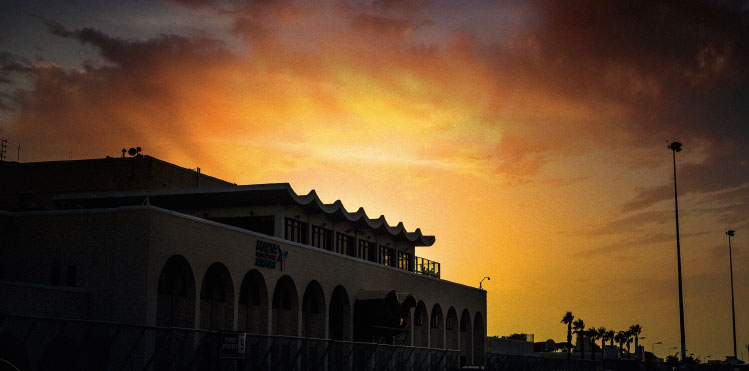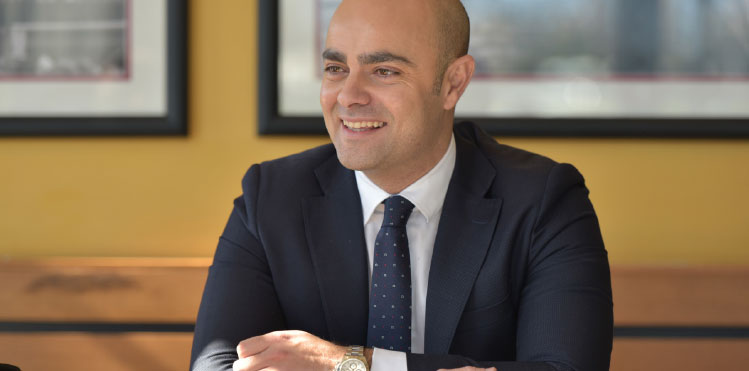
Alan Borg was appointed CEO of Malta International Airport in February, becoming the first Maltese to hold the position since the airport was privatised in 2002. Through a variety of roles over the past eight years, he has been a key player in making Malta and the airport better connected. He spoke to Ross Falconer.
Alan Borg’s background is in hospitality and this has instilled in him a customer-centric ideology, and a passion for constantly striving to achieve the best visitor experience. He began his career at Malta International Airport eight years ago, initially in airline marketing, before quickly moving on to become Chief Commercial Officer.
“During this time, I was also General Manager for the SkyParks Business Centre – a role that meant spearheading the development of this business segment, which was a first for Malta International Airport,” he commented. “This was a strategic move to diversify the airport’s revenues and decrease its dependency on the aviation segment.”
This typifies Borg’s progressive approach, which shines through in conversation. He has identified the non-aviation segment as fundamental in diversifying the airport’s revenue streams, and this is being realised through projects like the SkyParks Business Centre, which is now Malta’s most desirable corporate address, housing local headquarters for global brands including Microsoft and Vodafone. Indeed, non-aviation revenues increased by 12% in 2014 and now contribute 30% of overall revenues. It is successes such as this that highlight Borg’s crucial role in the airport’s development in recent years, and which led him to his new position as CEO. “My past experiences across the various facets of the business put me in good stead for this role, and I’m looking forward to the challenges ahead,” he asserted.
The latest passenger figures for May show year-on-year growth of 9.9% and, in fact, over the past three years the airport has hit new records every single month. This is partly a result of its route development success, which has included attracting five new airlines – Finnair, Transaero, Swiss, Aegean, and Jet2.com. “The key to driving this seat capacity growth is by ensuring Malta remains attractive, and all industry stakeholders are working together to make our island an all-year-round destination,” Borg explained. “Our capital Valletta is such an exciting destination in itself – a city full of history, culture, entertainment, and great food. Tourists can fly in for the weekend and never have to leave the heart of the city – it’s the perfect city break.”
Enhancing “product Malta”

Alan Borg, CEO Malta International Airport: “We are in a continuous process of boosting our non-aviation revenues by enhancing our product offering. We have just upgraded many of our outlets around the airport, incorporating new and modern retail concepts and striving for an overall improvement in the passenger experience.”
Tourism contributes over 25% of Malta’s GDP, meaning it has a significant multiplier effect on its island economy. The airport’s own contribution to the economy is estimated at over 9%, and Borg expressed a feeling of responsibility to work with all stakeholders to keep improving “product Malta”. “Let’s not forget that we are the first and last impression, so we are dedicated to Malta’s offering,” he said. “In fact, through the Malta Airport Foundation, we have started to invest in our culture and heritage, so as to enhance product Malta.”
There is also a commitment to connectivity and making this Mediterranean island more accessible to more parts of the world. The current focus is on the comparatively untapped markets around Scandinavia and Eastern Europe, including Russia. Borg explained that Malta offers an opportunity for a better climate to these tourists, even during the shoulder months (at the beginning and end of peak season), and this is in line with its strategy to reduce seasonality.
Borg also articulated a focus on “excellence at all levels, particularly when it comes to the customer experience”. Myriad investments are underway, including expansion of the non-Schengen arrivals area, and extension of the security screening area. “Ultimately, our focus is to keep developing our landside master plan to harness the opportunity the south of Malta brings, and see our business cluster flourish through the creation of increased office and retail space, parking facilities, and a hotel,” Borg added.
As our conversation draws to a close, it is clear that he is tireless in his pursuit of further enhancements across the airport’s business. “I am confident about our future in terms of traffic numbers, and we are now in the process of securing capacity for summer 2016. We are also currently investing in innovating to enhance our passenger experience. According to a recent brand perception survey, 95% of Maltese residents are proud of their airport, so I want to make sure we keep improving on this,”
Borg concluded.







